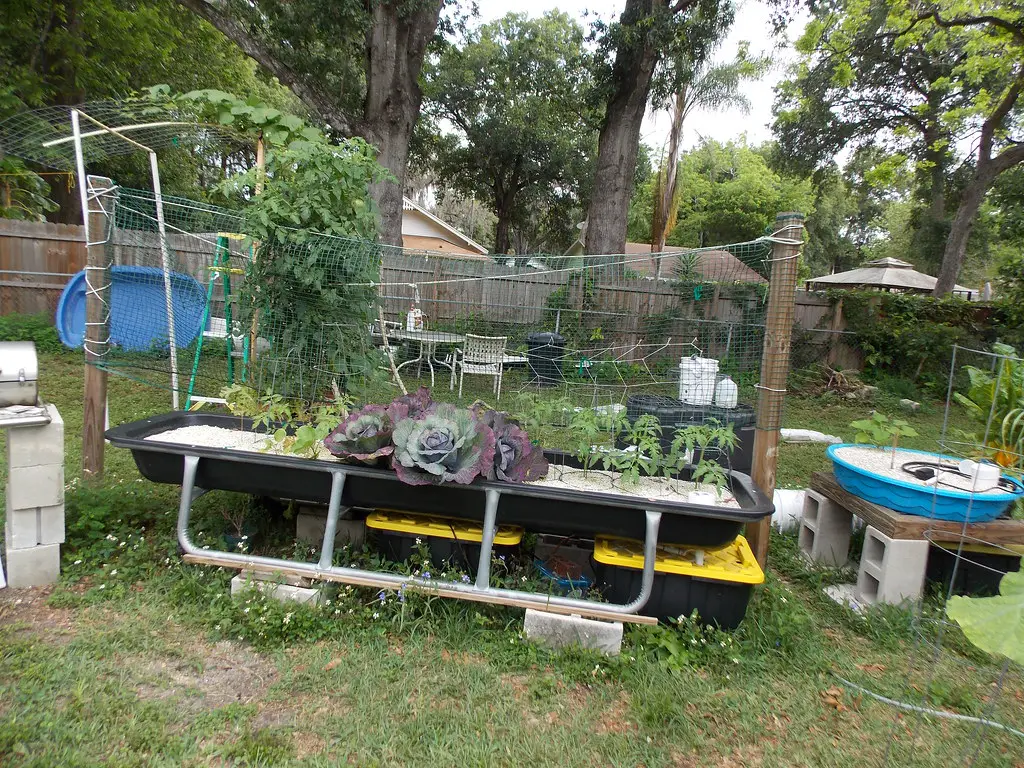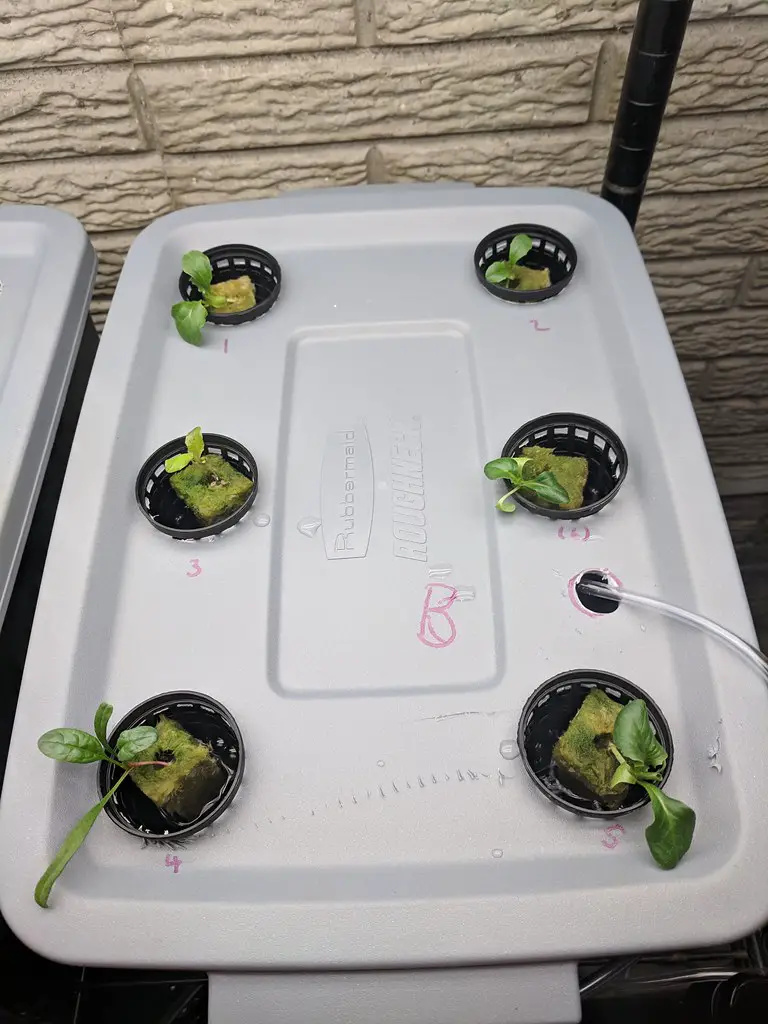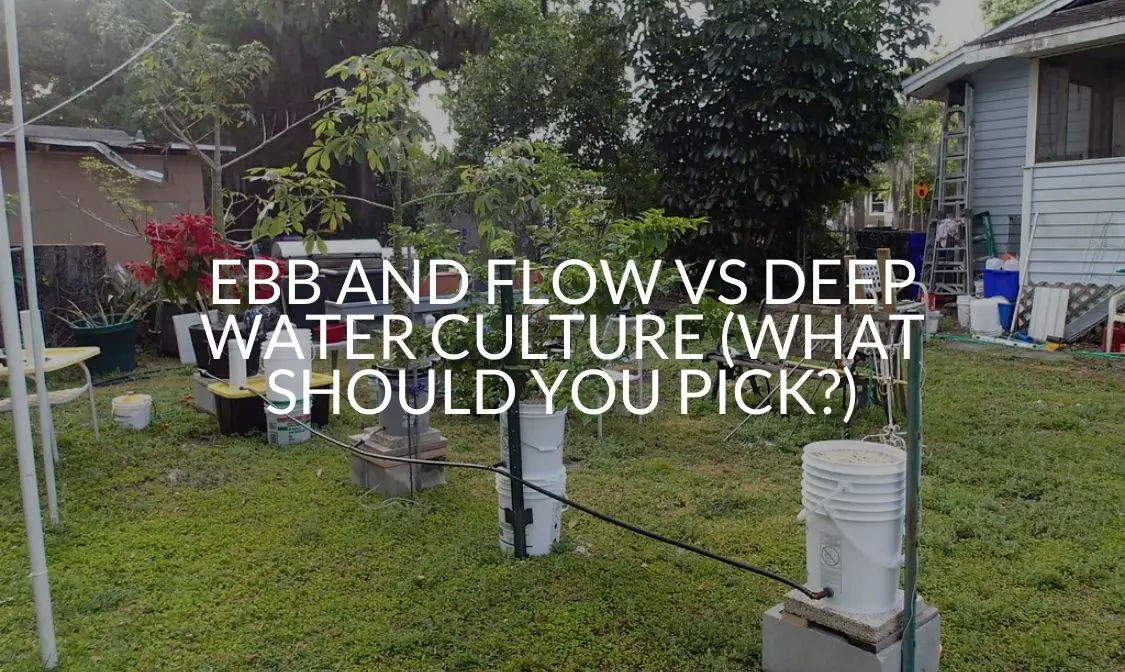Hydroponics is an extremely easy and low-maintenance way of growing plants both inside and outside. Using a hydroponic system inside can even be done all year long. The technology of hydroponics doesn’t require soil and is great for growing crops in places with limited space.
There are a lot of different hydroponic systems available, so it is important to choose the right one for you. This can be overwhelming but having the proper information can be beneficial. Two of the most popular systems are the ebb and flow and deep water culture.
There are differences between these two systems. Keep reading to learn more about the differences and which system might be best for you.
What Is Ebb And Flow Hydroponics?
An ebb and flow hydroponic system works in a similar way to the ebb and flow sea tide. This method involves flooding the plants and draining them with a nutrient solution. There are two different containers needed for this system. Both a growing tray and water reservoir are necessary.
The growing tray is where you will keep the seedlings, seeds, or plants. The reservoir will hold the water and nutrient solution that the plants need to grow and be healthy. In addition to these two containers, the ebb and flow system also needs an overflow regulator and water pump.
The growing tray will be placed above the reservoir, and the pump will go from the reservoir to the tray. As it works, the pump moves the nutrient solution from the reservoir to the tray to allow the plants to be flooded. In most cases, the pump will come with a timer that will help regulate the flooding schedule.
The nutrient solution will flood the plants until it reaches the overflow regulator. This will ensure that there is no spilling and that the plants don’t get completely submerged. The plants still need oxygen to grow, and the regulator will make sure the plants still get plenty.
The growing medium will absorb the proper amount of solution, then the water will drain out of the overflow regulator and back into the reservoir. This allows the roots to dry out and get some more oxygen. This prevents the plants from getting a disease.
What Are The Pros Of Ebb And Flow Hydroponics?
Easy To Build
An ebb and flow hydroponic system is very easy to set up and maintain. It only takes a few minutes, a water pump, overflow regulator two containers, and pots for your plants. In addition to being easy to build, the system is reliable and can be used for a long time.
Inexpensive
This system is also incredibly cost-effective. There are so few materials necessary, it won’t cost you very much to build. The most expensive items will be the small water pump and overflow regulator that you need to purchase. This is what will run your system, so it is important to have. The containers will also be inexpensive to purchase.
Effective Nutrients
Your plants will get the perfect amount of nutrients with this system. The water pump distributes magnesium, calcium, sulfur, potassium, nitrogen, etc. into the plants that can be used more than once. The plants flood with the nutrient water and drain back into the reservoir to be distributed back into the plants again.
Continuous Cycle
The ebb and flow system allows a consistent cycle of nutrients to the plants. With a continuous system, the plants can grow stronger and healthier. This is because the process of bottom watering forces oxygen into the plants.

What Are The Cons Of Ebb And Flow Hydroponics?
Limited Oxygen
The pots are situated on trays above the water and nutrient solution reservoir. This means there isn’t much height or space between the top of the water and the bottom of the plants. This promotes limited oxygen to the plants, which is not suitable for plants that are larger.
Mineral Build-Up
It is inevitable that minerals will start to build up in the system over time. This will create the blockage of nutrients from getting to the plants and can quickly result in a nutrient deficiency for your plants.
Relies On Power
The ebb and flow system relies only on power to operate and function. If the regulated schedule of flooding and draining gets interrupted by a shortage of power, the roots of the plants can quickly dry up and impact the growth of the plants.
Pathogens
Pathogens can become present in stagnant water. Since the water sits in the reservoir and the flood trays, pathogens can easily contaminate the entire water system.
Who Is Ebb And Flow Hydroponics Best Suited for?
Ebb and flow hydroponics is great for those who want to grow strong, healthy plants with little maintenance. This system is highly recommended for beginners because it doesn’t take alot to maintain. If is cost effective, so beginners don’t put too much money into the system for it to not work out for them.
What Is DWC Hydroponics?
DWC or deep water culture hydroponics only have one container. This container is usually between 8 and 10 inches deep depending on both the size of your plants and how much nutrient solution is needed. This system also requires a pump, but instead of a water pump, it uses an air pump.
The air pump works to distribute oxygen to the plants because their roots are fully submerged in the water and nutrient solution. The plants are usually suspended over the solution and held by Styrofoam or plastic. In some cases, this is called a raft system because of the way the plants float on the water like a raft.
The plant pots are filled with a growing medium such as rockwool or hydroton, and the plant seeds are placed inside. The pot will then be covered with lids that the roots grow through and has air stones that allow the roots to receive proper oxygenation.
The plant roots are submerged in the water and nutrient solution constantly for their entire lifetime. This means the roots aren’t exposed to oxygen on their own. That is where the air pump comes in. The air pump distributes oxygen to the roots to help the plants get more nutrients to grow strong and healthy.
What Are The Pros Of DWC Hydroponics?
Little Monitoring
DWC is one of the hydroponic systems that requires the least amount of monitoring and maintenance. You just need to make sure the water stays at the proper level, the pH is balanced, and the right amount of nutrient solution is added.
Growth And Yield
With this system, the growth and yield of the plants are accelerated. With the aeration of the roots by the air pump, the cell growth increases and creates a stronger base for the plants to grow.
Less Fertilizer
There is very little need for fertilizer with the deep water culture system. The plant absorbs all of the nutrition is needs from the nutrition solution that the roots absorb from the water container. This means there isn’t much need for additional nutrients from a fertilizer.
Easy To Build
This system is one of the easiest to set up. All you need to set up is an 8- to 10-inch deep container filled with water and nutrient solution. It is often considered the best system for beginners to use because of how simple it is.

What Are The Cons Of DWC Hydroponics?
Water Properties
Plants require certain water properties in a hydroponic growing system. It can be difficult to constantly keep the proper pH balance, water temperature, water level, and nutrient solution where they should be. This can require some extra maintenance.
Potential Pump Failure
The risk of pump failure is a very important issue that you can run into. If the pump fails, the oxygen supply of the water will be cut off. This could cause the plants to potentially drown without the proper oxygen levels in the nutrient solutions.
Not Expandable
Deep water culture systems don’t have the possibility to expand. This means that plants can’t be spread apart from each other to prevent any potential mishaps. This could result in the roots getting tangled together and increasing the risk of root damage.
Who Is DWC Hydroponics Best Suited for?
DWC hydroponics is best suited for people who are beginning to grow plants with a hydroponic system. It is one of the simplest procedures to set up and maintain. The roots are always directly submerged in the water, so there isn’t much work that needs to be done to keep them happy.
Which Costs More to Setup?
The cost of the setup is essential because it can make or break your decision on which process to use. Let’s take a look at the cost of each system.
Ebb And Flow
The largest financial investment of the ebb and flow hydroponic system is the pump. Depending on what you buy, the pump can be on the expensive side. In the long run, the ebb and flow system in less expensive to run because the pump runs on a schedule instead of all the time. It won’t run up your electricity bill.
DWC
While this system doesn’t need a water pump, it is necessary to purchase an air pump. This air pump will be a little costly up front, but also more expensive to run. The air pump has to be running all the time to keep the roots of the plants properly aerated.
Which Produces the Best Yield?
The yield of plants refers to the amount of crop that is grown and harvested. It is an important factor to consider. Take a look at the yield of each hydroponic system.
Ebb And Flow
The ebb and flow system is great when it comes to propagation. However, it doesn’t provide as much yield as the DWC system. Ebb and flow is better when used for propagating the plants, then they are usually moved to a different hydroponic system to produce crops.
DWC
The yield of the DWC system is higher than that of the ebb and flow, which gives it a slight advantage. This is due to the roots constantly sitting in the water while having a constant supply of oxygen from the air pump. The plants are grown in individual containers, allowing the plants to each get the proper nutrients.
Which One Takes Up Less Space?
One of the most important factors of a hydroponic system is how much, or how little, space it takes up.
Ebb And Flow
The amount of space an ebb and flow system takes up will depend on how large or small scale your requirement of growth is. If you are considering a large-scale setup, you can expect it to take up more space. The maximum width of a growth tray for ebb and flow is just under 4 feet long.
With the reservoir being situated below the growth tray, this means it won’t take up any extra space. It is also pretty easy to transport should you need to move the location of the setup.
DWC
DWC can take up more space than the ebb and flow system. This is because it uses multiple trays instead of one single tray for the plants to grow. The space that is taken up by five or six different growth pots can take up more space than one grow tray. This system also isn’t as easy to transport.
Which is More Prone to Diseases?
Disease is always something to consider when you are growing plants, especially in a hydroponic growing system. If one plant gets infected, it can quickly spread to other plants in the system. Which of these two is more prone to diseases?
Ebb And Flow
In the ebb and flow system, if one plant gets infected, it can easily be removed from the tray and isolated. However, there is a higher chance of the roots getting tangled up with each other. If the roots are tangled, the infected plant can quickly spread diseases to the other plants.
The spread of infection is also an issue because the water circulates, flooding the plants and draining back into the system.
DWC
DWC is less likely to get a disease and even less likely to spread the infection to other plants. Since the plants grow separately in individual trays, there is a lower chance of the roots becoming entangled and spreading disease. It is also easier to isolate the plants if they do get a disease.
Which Is Easier To Maintain?
Maintenance is also incredibly important. Some systems require constant monitoring, while others are more self-sufficient. If you want to keep the maintenance level as low as possible, you will need to know which is easier.
Ebb And Flow
The whole ebb and flow system depends on the water pump to flood the plants and the overflow regulator to drain back into the reservoir. If there are any failures in the system, the plants can suffer almost immediately.
If the overflow regulator malfunctions, there is a risk of overflowing and cutoff of the water flow. You will need to monitor the electronic components to be sure they are always working properly.
DWC
Just like the ebb and flow, the DWC relies on the air pump to provide oxygen to the roots of the plants. If the air pump fails, the plants will die slowly as they become oxygen deficient. It is important to always make sure the air pump is working properly for the safety of your plants.
With a DWC, you also need to monitor the properties of the water. The temperature, pH balance, and nutrient solution all has to be at the proper level for this system to keep plants healthy.
What’s the Best Hydroponic System to Choose?
Ebb and flow and DWC are both fantastic hydroponic systems for beginners. It is believed, however, that the DWC is better when you are first starting out. Though it takes a little more monitoring, it requires less equipment.
If you want a system that allows a larger number of plants and is easy to customize, you will prefer an ebb and flow system. If you want a system that is incredibly easy to set up and manage, a DWC system will be right for you.
Final Tips for Beginners
No matter which system you decide on, you will need to make sure you try to grow the right kind of plants in the right kind of system. For an ebb and flow, plants that are bulky work out great. Heavier plants like vegetables and herbs with deep roots are perfect.
For a DWC system, lightweight and small plants are the way to go. The plants also need to grow easily on their own. The best plants would be leafy greens like kale, okra, collard greens, etc.
Recap
Hydroponic systems are quickly gaining popularity, and it is easy to see why. Two of the most popular systems are the ebb and flow and deep water culture systems. When deciding which method you want to start with, it is important to have all of the information possible to make the right decision.
You need to understand which system takes up less space, which is easier to manage, and how much each cost. If you are a beginner, it is recommended to start with a DWC system. This will be inexpensive, easy to set up, and won’t require much maintenance. It can also help you get a feel for hydroponic gardening.

